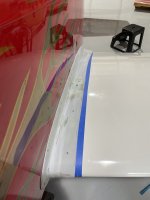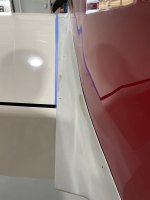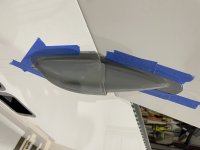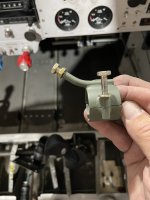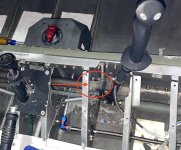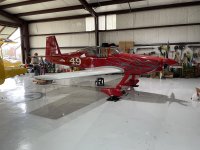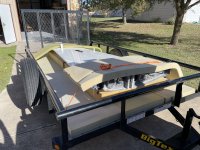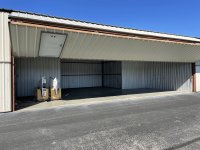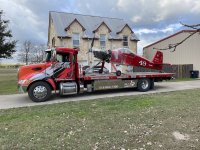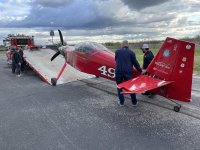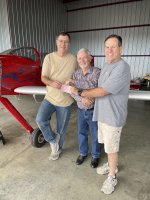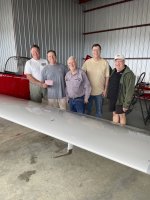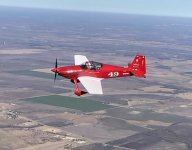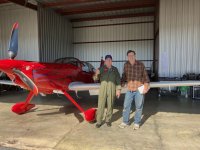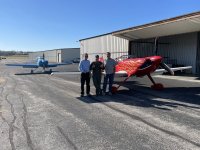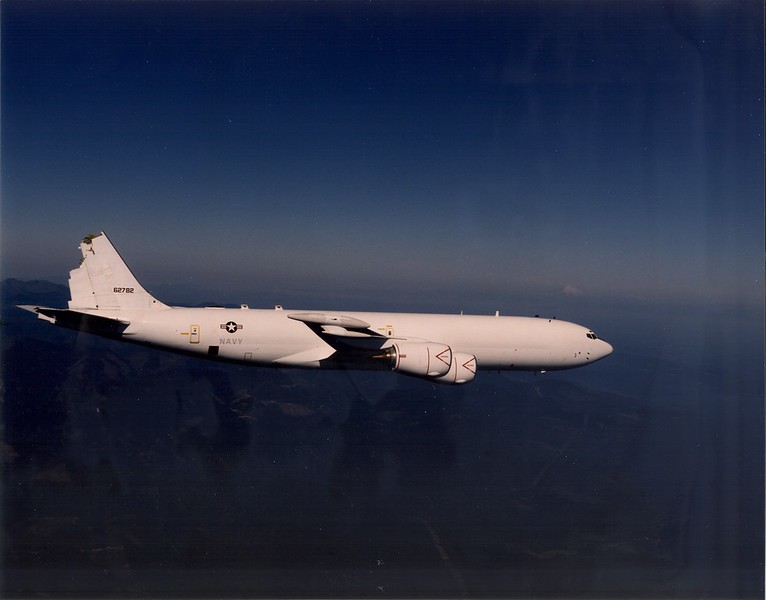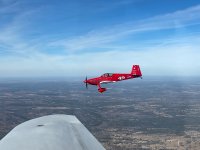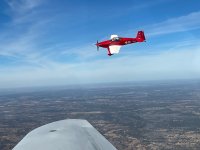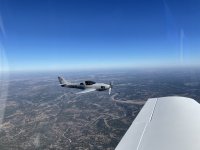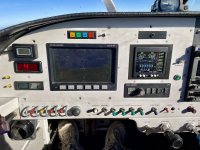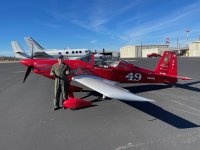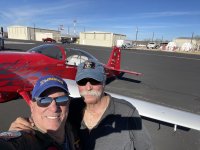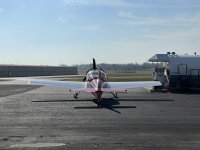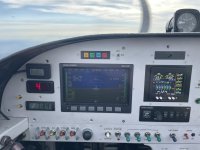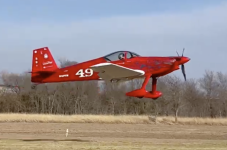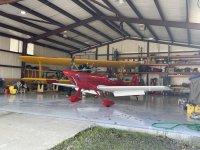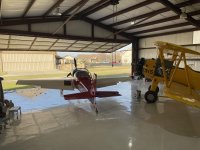As Steve mentioned, we did two flights today, and both went quite well. That first takeoff today...in a wing that has never flown before...has been in my thoughts quite a lot over the past several weeks, and especially the last few mornings, as we waited for weather to support a first flight, and I had more time to think about it. I've done a few first flights for builders, but this was a bit different. The good side is I do know my airplane well. That notwithstanding, would the wing fly straight and balanced, would I get any buffet on takeoff, would a wing drop, would the ailerons work, would this beast fly? You know, those things you think about between waking up and that first cup o joe in the morning. As Steve said, "if you make it round in the front, and pointy in the back, it will fly". Of course, we poured in a lot more science and build care into this, and we really worked hard this week to ensure we were all green for launch.
So there at the end of RWY 35 in Taylor, it was take a breath, and push in the black knob, then do some of that pilot $#!+. By the time I had my power set for TO and had eased the tail up, it was already light on the wheels, and was ready to fly. Flew right off, and was laterally stable from the liftoff on. No heavy wing, and ailerons (and the stock aileron trim) worked as advertised.
Climbout felt nice. We wanted to work at Va for the most part during the tests, which was calculated at approx 140 KIAS. (After stall testing on hop 2, Va is 142 KIAS...Steve knows his stuff). Control harmony is smooth. Ride is somewhere between an RV and a Glasair, in terms of how the plane rides through small bumps. So it's a slightly stiffer ride, but has a solid feel. Rolling into turns does not show a lot of adverse yaw, but I did focus on using a bit of rudder today. My previous ailerons were shorter than stock RV, due to the wing clip, so these larger ailerons feel more effective to me. Perhaps not as spritely as a light RV-4, but effective and somewhat powerful. Rolls are a bit downstream in testing, but it will be interesting to see how the full deflection rate is in a roll.
All of the stability and stick force gradient tests displayed what, to me, feels like a "normal airplane ride and performance". Go faster, it needs down trim, slow down, it needs up trim. Steady state turns needed a "normal" amount of opposite aileron pressure to stay steady state. All good! I worked up to sideslip yaw rates slowly, and it was very stable. Rudder deflections to cause a dutch rolling tendency displayed just a bit of wing rock (proverse roll), and the yaw dampened out quickly.
Slow flight was solid and stable. I did incipient stalls on hop 1, and full stalls were done on hop 2. I was probably on the cautious side on hop 1, as I didn't really feel any buffet before accelerating back up after each test (clean and half flaps). I only slowed to 68 KIAS in hop 1, but that gave me confidence for a decent (not too fast) final approach speed. On hop 2 I took it to a stall break. There were nice, clear buffet cues from about stall + 5 knots, to the stall. Clean and half flap stalls had a clear, but not intense break, and I did note that a wing would drop slightly if I did not have the ball centered. Kinda normal...perhaps a bit quicker on the wing drop than my previous wings, but not radically so. On the first few I didn't quite have enough right rudder, and got a slight left wing drop. On the next few I probably overcorrected with rudder, and got a slight right wing drop. All were perhaps 10 degrees of bank, and were easily corrected with easing the AOA/back pressure, and with rudder. Clean stalls averaged 58 KIAS, and half flap stalls averaged 54 knots. My old (clipped) wings stalled at 58 clean, 52 full flaps...so this is a nice result.
We did not do any high speed testing today...we'll sneak up on that. Descent revealed a nice solid ride, and it just flew smoothly and turned nicely in a low power 170 KIAS glide.
Today I stayed fast in the pattern (110 DW, 100 base, 90 final), especially in hop 1, since I hadn't done full stalls, and I flew a somewhat wide pattern with a bit of extra speed, since I hadn't done accelerated stalls. 80 over the fence was a good, safe speed, and that turned into just a touch of float, and a slight bounce. The airplane felt light on the ground, but directional control felt normal, the tail could be flown down in a normal-feeling manner, and deceleration was good.
All in all it was a very satisfying day, and its nice to have that first takeoff/test flight monkey off our backs. Can't get cocky or complacent though, there's a lot of testing ahead, and envelope expansion will require similar focus. Sure is fun to fly though, and its very fun to see Steve see his creation fly. I'm lucky to be a part of this.
Oh yeah...don't look back you Wascally Wockets....heh, heh, heh, heh, heh....

Cheers,
Bob




